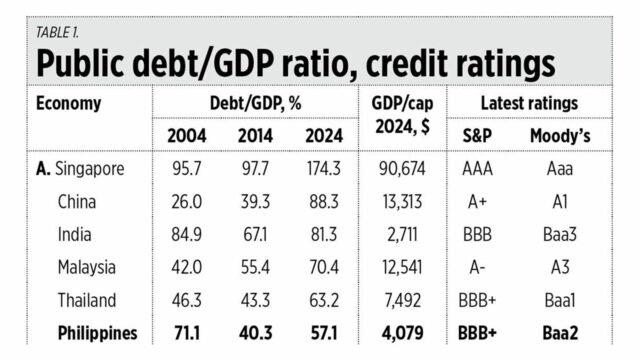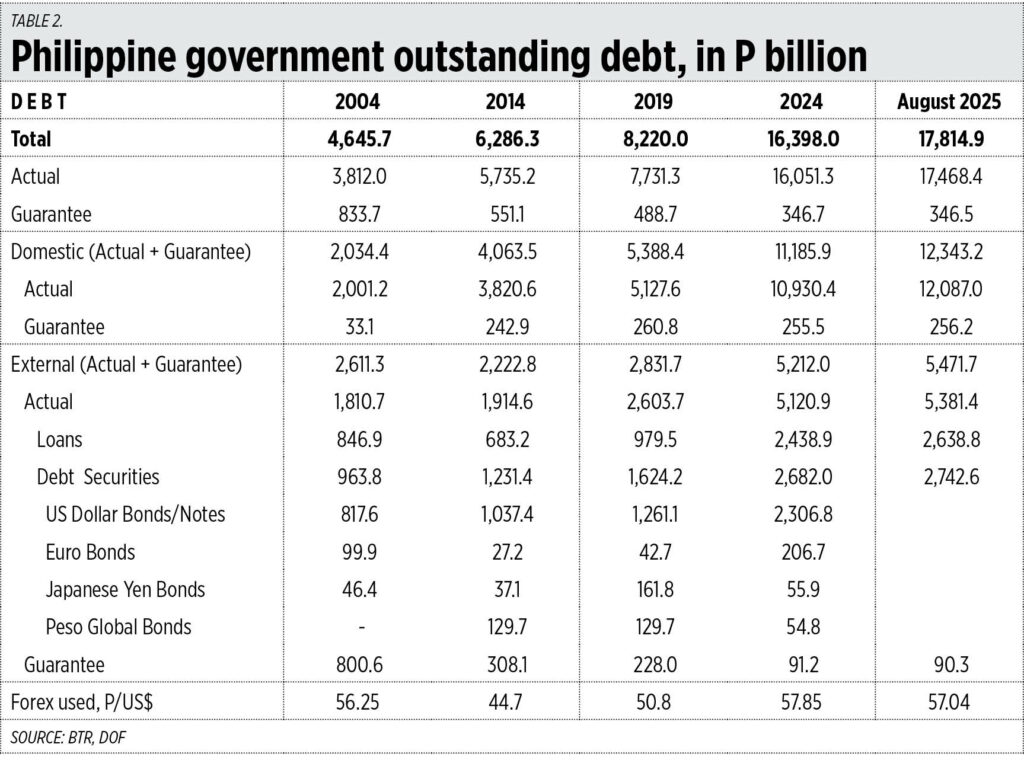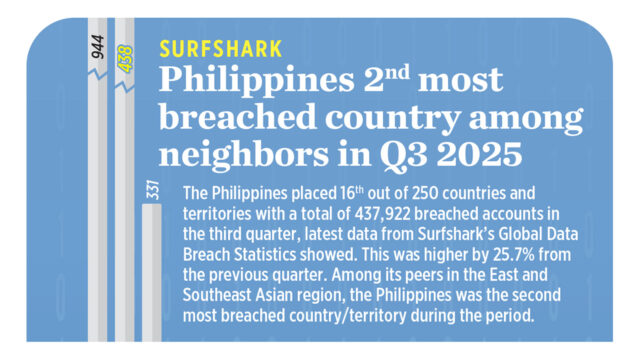By Erika Mae P. Sinaking
THE Philippines’ Independent Commission for Infrastructure (ICI) on Wednesday recommended the filing of administrative and criminal charges against lawmakers and public works officials linked to a multibillion-peso kickback scheme involving flood control projects, marking one of the biggest corruption probes under President Ferdinand R. Marcos, Jr.’s administration.
In a statement, the ICI said its investigation found “indications of collusion” among legislators, Department of Public Works and Highways (DPWH) officials and private contractors in the insertion and implementation of flood control allocations in the national budget.
Among those named in the recommendation to the Office of the Ombudsman were Senators Joel J. Villanueva and Jose “Jinggoy” P. Estrada, resigned Party-list Rep. Elizaldy S. Co and ex-DPWH Undersecretary Roberto R. Bernardo.
The ICI also sought charges against a former Caloocan congresswoman and an Audit commissioner.
Mr. Villanueva denied any wrongdoing, saying Senate records would prove he had questioned flood control allocations that were never implemented. “I have been against flood control projects from the start,” he told reporters in a Viber message, adding that the testimony from a former DPWH engineer would support his defense.
“All these, at the proper time, will prove my innocence,” he added.
Mr. Estrada also rejected the allegations, saying he never received any kickbacks from the projects.
“The allegations against me are purely hearsay or based solely on rumors,” he said in a statement in Filipino. “I will clear my name, and I am fully confident that in due time, the truth will prevail.”
Mr. Co, who is overseas supposedly for a medical procedure, has rejected allegations of misconduct, while Mr. Bernardo insists he neither had knowledge nor participated in the irregularities.
The ICI said its recommendation was based on initial findings, and that determining liability would rest with the Ombudsman. “This move underscores the commission’s commitment to transparency and accountability in public infrastructure spending,” it added.
If proven, the acts could constitute violations of the Anti-Graft and Corrupt Practices Act, Plunder Law and bribery provisions of the Revised Penal Code, as well as administrative breaches of the Code of Conduct for Public Officials.
‘KICKBACK’ TRAIL
Sworn affidavits and documentary evidence from former DPWH engineers showed that lawmakers endorsed or inserted flood control projects in the national budget from 2022 to 2025 in exchange for kickbacks of 20% to 30% of project costs, the ICI said.
Payments were routed through field engineers and cooperating contractors to secure project awards and facilitate fund releases, it said. The arrangement was described as a “systematic kickback structure,” with legislators acting as project proponents and DPWH officials serving as intermediaries.
The scheme began at the budgeting stage, when proposed projects were inserted into the National Expenditure Program (NEP), passed through the bicameral conference committee and retained in the final General Appropriations Act (GAA).
Once the funds were released, favored contractors allegedly remitted percentages to officials who approved project documents, variation orders and disbursement vouchers. The ICI said several projects were nonexistent, redundant, or grossly overpriced, diverting billions in public funds.
It cited examples in Bulacan, Pampanga and Quezon City where allocations in 2023 and 2024 had “identical scopes” despite being awarded to different contractors.
The ICI reached its conclusions based on the sworn affidavits and supporting evidence from former DPWH engineers Henry C. Alcantara, Brice Ericson D. Hernandez and Jaypee M. Mendoza.
During the Ombudsman filing, ICI Chairman Andres B. Reyes, Jr. named John Carlo Rivera, a former public works project engineer, as a key intermediary who allegedly facilitated the transactions. Mr. Rivera was among 16 DPWH personnel suspended last month over the same scandal.
Witnesses said Mr. Rivera transmitted project lists prepared by DPWH engineers to regional offices or lawmakers, after which summaries were compiled and contractors were selected. Kickbacks were allegedly paid in two tranches — an initial 10% advance upon NEP approval and the remaining 15% after the GAA enactment.
“If the insertions were included in the GAA, the whole 25% special allotment portion is given to the proponent,” Mr. Reyes said. “This 25% payoff is advanced by the contractor to ensure the project will be awarded to them.”
He said the pattern pointed to “an entrenched culture of fund manipulation” within infrastructure budgeting.
“We will continue to investigate, follow the evidence and pursue charges to the very last man involved,” Mr. Reyes said. “Justice will not be delayed this time. This is our promise to our countrymen.”
The filing marks the ICI’s second referral to the ombudsman and comes seven weeks after the commission was set up. Since launching its inquiry on Sept. 19, the body has summoned a number of witnesses, formed a technical working group to fast-track fund recovery and confirmed more than 421 ghost flood control projects nationwide.
The commission has also coordinated with the Philippine National Police for site inspections and is working to overhaul the licensing of government contractors.
On Tuesday, ICI Executive Director Brian Keith F. Hosaka said the body is reviewing the rules for livestreaming proceedings to promote transparency. However, he noted that additional powers — such as the ability to cite uncooperative witnesses for contempt — might require legislation.




















